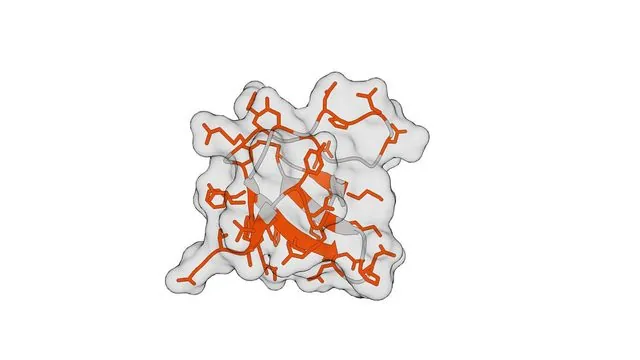
Groundbreaking Study Reveals Simple Rules Governing Protein Stability - A Major Leap Forward for Disease Treatment!
2024-09-26
Summary
A groundbreaking study published in the journal Nature reveals that mutations affecting protein stability adhere to simple rules. Researchers believe this fundamental understanding can accelerate the development of new treatments for various diseases and assist in engineering new proteins for industrial applications.
Introduction to Proteins and Mutations
Proteins are composed of chains of twenty different amino acids, and mutations can alter their structure, impacting health. Diseases like cancer and neurodegenerative disorders often involve multiple mutations in a single protein.
The Challenge of Predicting Protein Configuration
Predicting how mutations change protein shape is crucial, yet the vast number of possible configurations poses an enormous challenge. For instance, a protein with 34 amino acids can have 17 billion potential configurations with just one mutation.
Simplifying Protein Mutations: New Insights
Dr. André Faure and Dr. Ben Lehner's research shows that the effects of mutations on protein stability are often predictable, contrary to previous assumptions that interactions between mutations could lead to unexpected results. Most mutations work independently.
Implications for Disease Understanding and Treatment
The research could help predict disease severity in conditions with multiple mutations in a single protein and enhance treatment strategies accordingly.
Streamlining Drug Development
By understanding which mutations contribute to instability, researchers can develop targeted therapies for diseases related to misfolded proteins like Alzheimer’s.
Biotechnology Applications
The findings could assist in creating effective enzymes for degrading plastics, showcasing the practical implications of this research.
Limitations and Future Directions
The team acknowledges their study's limitations in accounting for complex interactions involving three or more mutations and the necessity for validation in practical applications.
Conclusion
This research marks a significant advancement in understanding protein stability, potentially reshaping future research and therapeutic strategies in genetics and biomedicine.




 Brasil (PT)
Brasil (PT)
 Canada (EN)
Canada (EN)
 Chile (ES)
Chile (ES)
 España (ES)
España (ES)
 France (FR)
France (FR)
 Hong Kong (EN)
Hong Kong (EN)
 Italia (IT)
Italia (IT)
 日本 (JA)
日本 (JA)
 Magyarország (HU)
Magyarország (HU)
 Norge (NO)
Norge (NO)
 Polska (PL)
Polska (PL)
 Schweiz (DE)
Schweiz (DE)
 Singapore (EN)
Singapore (EN)
 Sverige (SV)
Sverige (SV)
 Suomi (FI)
Suomi (FI)
 Türkiye (TR)
Türkiye (TR)